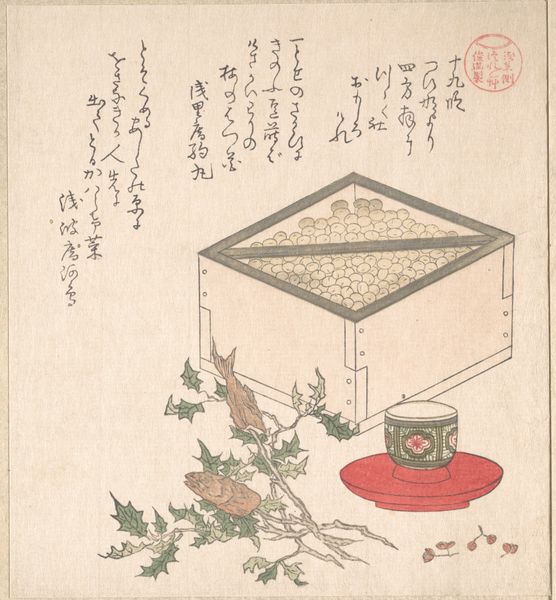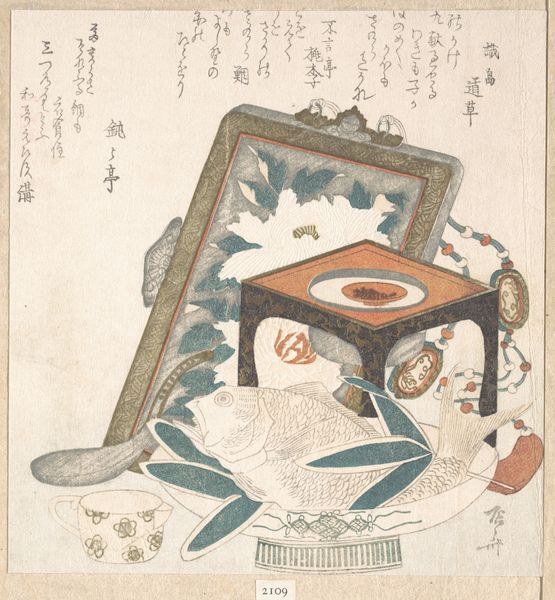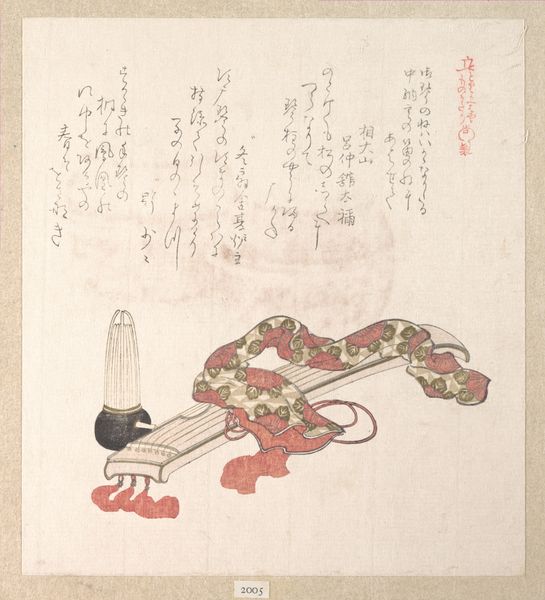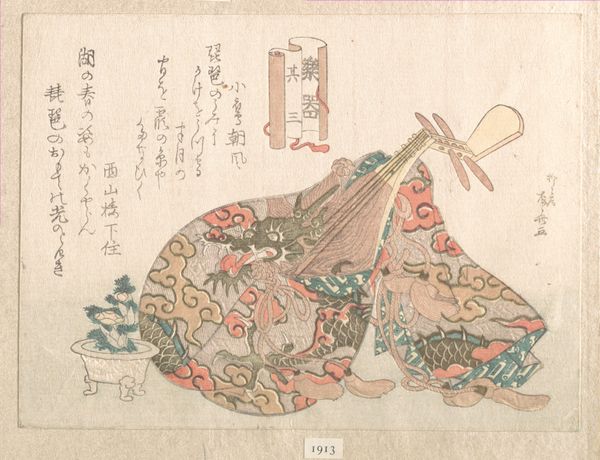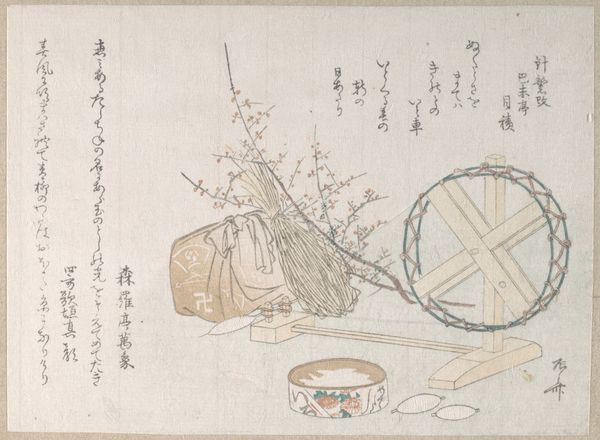
painting, print, watercolor
#
water colours
#
painting
# print
#
asian-art
#
ukiyo-e
#
watercolor
#
orientalism
Dimensions: 8 1/16 x 7 1/4 in. (20.5 x 18.4 cm)
Copyright: Public Domain
Editor: Here we have "Candle-Stand and Fan" by Kubo Shunman, created in the 19th century. It's a beautiful painting, using watercolor and printmaking techniques, and it has a wonderfully delicate, almost ephemeral quality. What's particularly striking is the juxtaposition of the mundane, like the candle stand and fan, with what appears to be accompanying calligraphy. What do you see in this piece? Curator: I see a commentary on the transience of beauty and the role of art within society. In Ukiyo-e prints like this, these seemingly simple objects carry rich cultural significance. The fan, for instance, was a popular commodity but also an emblem of status, adapted in artistic form into the orientalist aesthetic. This juxtaposition offers us insight into social stratification of 19th century Japan, where artistic expression catered to, but also reflected the aspirations of different classes. How do you perceive the artist's inclusion of text? Editor: Well, it gives the artwork an added layer, almost like a personal narrative woven into the visual representation. It’s not just about depicting objects, it’s about creating a complete sensory experience. It encourages a kind of deeper engagement with art, placing it in society and adding to its purpose beyond just aesthetics. But do you think the choice of subject matter reflects any wider trends in the art world at that time? Curator: Absolutely. The focus on everyday life in ukiyo-e prints responded to a growing urban culture, catering to a merchant class eager for accessible and relatable art. The inclusion of calligraphy was also a way to elevate the status of these prints, associating them with more traditional forms of art and knowledge production, thus legitimizing them within the broader cultural landscape. Considering its place in The Met's collection, how do you think its perception might have shifted for contemporary audiences? Editor: It's really thought-provoking to think about how the original cultural context impacts modern interpretation. Now it's displayed within a very specific institutional framework. It gives rise to reflections on both its value and preservation as historical heritage. Thank you. Curator: Indeed, examining art within its socio-historical framework, and how the passage of time influences our perception is truly rewarding.
Comments
No comments
Be the first to comment and join the conversation on the ultimate creative platform.


